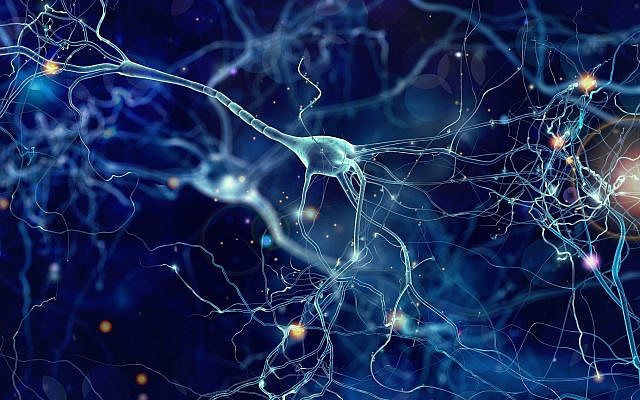Is your hospital competent enough to know about this and create a protocol?
Your chances of getting dementia.
1. A documented 33% dementia chance post-stroke from an Australian study? May 2012.
2. Then this study came out and seems to have a range from 17-66%. December 2013.
3. A 20% chance in this research. July 2013.
4. Dementia Risk Doubled in Patients Following Stroke September 2018
5. Parkinson’s Disease May Have Link to Stroke March 2017
Nothing done?
Laziness? Incompetence? Or just don't care? No leadership? No strategy? Not my job?
Israeli team uses silicon chip to deliver Alzheimer’s-busting protein to brain
In Technion, Bar-Ilan trials, nanochip ferries ‘neural growth factor’ — which combats neurodegenerative diseases — and releases it where needed, overcoming blood-brain barrier
Researchers at the Technion–Israel Institute of Technology and
Bar-Ilan University have developed technology they hope will help
inhibit the progression of Alzheimer’s disease.
The study was published recently as a cover story in the journal Small. It was led by Prof. Ester Segal and PhD student Michal Rosenberg from the Technion Faculty of Biotechnology and Food Engineering with their partners, Prof. Orit Shefi and PhD student Neta Zilony-Hanin from the Bar-Ilan University Faculty of Engineering.
Alzheimer’s, the most common form of dementia, is a neurodegenerative disease whose symptoms include memory loss, speech impairment, orientation problems, and significant impairment of motor functions.
It primarily strikes the elderly, and among those age 85 and up it reaches a prevalence of some 30%. Due to the increase in life expectancy, the overall incidence of the disease has grown and it is today referred to as the epidemic of the 21st century.
 The major cause of the disease is the accumulation of a protein
called amyloid beta (Aβ) in brain tissues. The protein blocks and kills
nerve cells, also called neurons, in different regions of the brain.
This leads, in part, to damage of the “cholinergic mechanisms,” the
neurons in charge of brain function.
The major cause of the disease is the accumulation of a protein
called amyloid beta (Aβ) in brain tissues. The protein blocks and kills
nerve cells, also called neurons, in different regions of the brain.
This leads, in part, to damage of the “cholinergic mechanisms,” the
neurons in charge of brain function.
Research has previously shown that administering a specific protein, called “neural growth factor,” inhibits damage to the cholinergic mechanisms and slows the disease’s progression, said the Technion’s Prof. Segal in a phone interview.
“In people with neurodegenerative diseases, the expression of the neural growth factor protein is reduced,” she said.
The protein is known to have restorative qualities, but the problem is how to get it to the brain, she said.
Delivering the protein to the target area is not a simple task because the brain is shielded by the blood-brain barrier from infiltration by bacteria and harmful substances in the blood.
The research was conducted with the support of the Russel Berrie Nanotechnology Institute at the Technion.
The study was published recently as a cover story in the journal Small. It was led by Prof. Ester Segal and PhD student Michal Rosenberg from the Technion Faculty of Biotechnology and Food Engineering with their partners, Prof. Orit Shefi and PhD student Neta Zilony-Hanin from the Bar-Ilan University Faculty of Engineering.
Alzheimer’s, the most common form of dementia, is a neurodegenerative disease whose symptoms include memory loss, speech impairment, orientation problems, and significant impairment of motor functions.
It primarily strikes the elderly, and among those age 85 and up it reaches a prevalence of some 30%. Due to the increase in life expectancy, the overall incidence of the disease has grown and it is today referred to as the epidemic of the 21st century.

Prof. Ester Segal, of the Technion Faculty of Biotechnology and Food Engineering (Courtesy)
Research has previously shown that administering a specific protein, called “neural growth factor,” inhibits damage to the cholinergic mechanisms and slows the disease’s progression, said the Technion’s Prof. Segal in a phone interview.
“In people with neurodegenerative diseases, the expression of the neural growth factor protein is reduced,” she said.
The protein is known to have restorative qualities, but the problem is how to get it to the brain, she said.
Delivering the protein to the target area is not a simple task because the brain is shielded by the blood-brain barrier from infiltration by bacteria and harmful substances in the blood.
This protective barrier, however, also
restricts the passage of drugs from the bloodstream to the brain, making
it difficult for brain-curing medications to get through.
Thus,
the neural growth factor proteins, if given in drug form, do not pass
through the barrier, and even if they could, they would not live long
enough to make the long journey to the brain, Segal said.
Some clinical trials have already started
injecting these neural growth factor proteins directly into the brain
via a catheter, but the procedure is complicated, invasive and very
risky, Segal said.
Now, the Technion and Bar-Ilan University
researchers say they have created nanoscale silicon chips that could
meet this challenge.
The chips allow the insertion of the curative protein directly into the brain and its release at the targeted tissue.
These chips, developed in Segal’s lab, have a
nanoscale porous structure that allows them to be loaded with large
amounts of the protein. Through precise control of various features,
including the dimension of the chips’ pores and the chemical properties
of their surface, the researchers were able to create a silicone
structure that retains the protein in its active form and then releases
it gradually, over a period of about a month, to the target area in the
brain. After releasing the drug, the chips safely degrade in the brain
and dissolve, the Technion said in a statement.
With
the use of the chips as a vehicle, the protein no longer needs to cross
the blood-brain barrier, since the chip is inserted directly into the
brain. This is done in one of two possible ways, explained Segal.
The first is by implanting the chip into the
brain. Segal admits that this procedure is also invasive, as the skull
needs to be drilled into. But, she said, it is less invasive than
inserting a catheter, since the chip is not inserted into the brain
itself but rather is placed on the outer layer of the brain — the dura
mater, a dense connective tissue that surrounds the brain and spinal
cord. The researchers aim to eventually be able to load the chip with
medication that releases even more gradually, over the period of a year,
to prolong the drug’s effect. Currently, in trials with mice, the chip
releases the proteins over a period of a month.
The second way to get the proteins to the
brain is by using a “gene gun” — a device that has been developed to
inject DNA into plant cells in order to transform their genetic
structure.
As part of the study, Prof. Shefi of
Bar-Ilan reworked the gun, transforming it into “something like a nose
spray” that injects the silicon chip with the protein particles into the
brain via the nose, bypassing the blood-brain barrier.
The nose has direct pathways to the brain,
explained Segal “Not for nothing drug addicts sniff cocaine via their
noses,” she said.
This is the first time researchers have
successfully used a gene gun to directly deliver particles into a live
animal brain, she said.
In a series of experiments, the researchers
showed that the two ways of delivering the platform into mice brains
“led to the desired result,” said Technion doctoral student Michal
Rosenberg. The technology has also been tested on a cellular model of
Alzheimer’s disease, where the protein release led to the rescue of the
nerve cells, she said.
The team is already conducting pre-clinical studies on animals, at
Bar-Ilan , Segal explained, and hopes to expand them to clinical trials
if all goes as hoped.The research was conducted with the support of the Russel Berrie Nanotechnology Institute at the Technion.

No comments:
Post a Comment